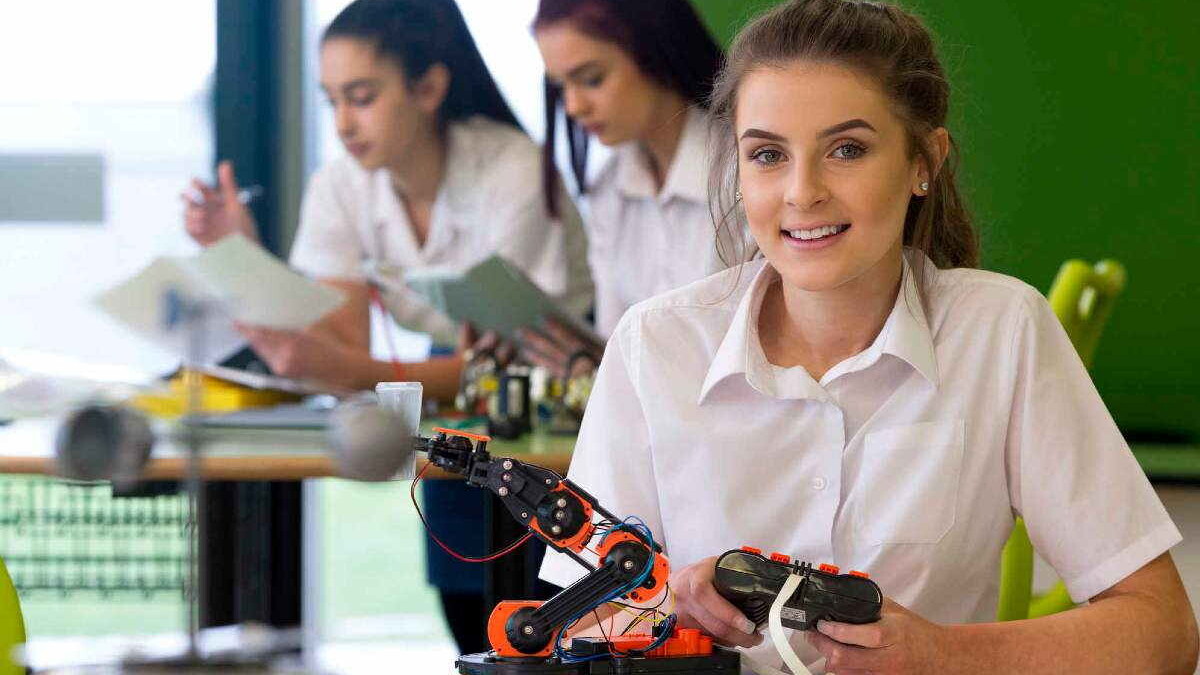The rich tapestry of assessment: How holistic testing ties together many threads to tell each student’s story
If you’ve viewed the lavish tapestries adorning the walls of English castles or French chateaux, you may be familiar with the vast collections of handcrafted, weft-faced weavings which portray beautiful images and tell a story. However, when you peek behind the pristine image, the rear of the tapestry reveals a mass of knots, warp threads and loose ends that have been carefully woven together and hidden to create a magnificent work of art. This messy richness of the tapestry weaving process is analogous to assessment.
Just as the beauty of a tapestry is the result of tying together loose threads, so too, the online assessment of a learner relies upon a series of data points that ultimately come together to craft an image and tell the unique story of each student.
The terms assessment, test, exam, measurement, evaluation are often used interchangeably. We tend to group them together whenever we refer to finding out about who students are, what they know and what they need to learn next. Their output leads to the creation of a series of data points which identify information about a student’s learning at a distinct point in time. Whether the data point is generated via a standardised, nationally administered test or by a classroom teacher observing a student’s furrowed brow being replaced by an ‘A-ha!’ moment, they each represent a moment in time during a student’s learning journey.
The true value of assessment lies in the rich tapestry that weaves each student’s story
Each data point generated is a loose thread that represents a moment in time that encapsulates the student’s ability on that day, in that context. Too often we become focused on the single strand (the test score or exam result) and lose sight of the fact that the real value lies in the triangulation of the data.
Andreas Schleicher, Director for the Directorate for Education and Skills at the OECD, frequently quotes the famous statistician, Edward W. Deming, who said, “without data you are just another person with an opinion”. Indeed, this is very true. Quality data is critical in enabling educators to do their work effectively and improve educational outcomes for all learners. However, no matter how rich, valid and reliable the data may be, it’s of little use unless it’s put into the hands of an accomplished educator who can weave the thread into the loom and generate a meaningful story about the learner’s progression. Quality educators who are engaging students in quality learning experiences and empowering them by improving educational outcomes will draw upon quality data to validate what they already know to be true about their students.
A single thread does not a tapestry make: every data point builds the learner’s profile
The story of a learner can only be told when the artisan is able to gather multiple data points and weave them together to reveal a true likeness of the student. A single data point in isolation is no measure of student achievement. Nor of a school’s achievement. We can only measure the success of our learners and our schools when we draw upon multiple threads and connect them using our working knowledge of our local learning community and the students within it. Such storytelling requires educators to embrace the data by focusing on the patterns, relationships and people at the heart of them.
The road to a holistic map of learners’ progress and potential
Looking to the future, my hope is to see a more holistic approach that reflects the rich tapestry of assessment. I envisage an approach that brings together the heart and mind of the student and provides significant agency as the learner completes the assessment. Affording students a strong voice in the assessment process provides educators with valuable data and makes the test-taking process an educative one. It also helps tie some loose threads together as we seek to assess the whole learner and map their progress throughout their schooling.
About the author
Sara Ratner
Contributor
You might also like
Want to learn more about our tailored solutions?
Chat to one of our assessment or learning consultants today.
or call us on 1300 857 687 (Australia) or +61 2 6652 9850 (International)




